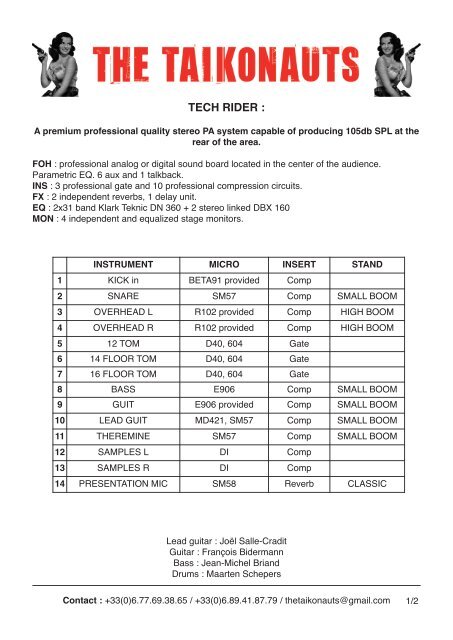

Some other locations similarly might require temporary spikes, such as showing location for the piano or for risers The center stage spike tends to be the one most referenced. A "spike" is a mark on the floor, often a cross that is made with gaffer’s tape, but sometimes paint or inlaid wood as part of the floor construction. You could also make a lighting plot, which is like a sound plot, but with lighting specifications and accompanying cues.
STAGE PLOT PRO SAMPLES CODE
The live sound engineer will prepare a similar diagram that indicates microphone and monitor placement, with numbers indicating mic locations and an accompanying chart indicating precisely what model mic is associated with each code number. (See figure, from Music Industry Forms, Berklee Press 2014.) For each one, in a corner or attached sheet, write the total number of each type of gear (stands, chairs, risers, instrument stands, specific percussion, etc.) you need on stage. Note: you need as many stage plots (and also sound and lighting plots) for as many different setups as you have. Pianos are drawn with their curve, so you can see how it is situated. Tympani are large circles O, while stools for upright bass, etc., are small circles o. Rectangles are for risers, and their height is indicated to the side. An X indicates a chair, and an – indicates a music stand.

There are certain conventions that you will see in concert halls worldwide. Make a stage plot. A stage plot, or “stage setup diagram,” is like a map of exactly what goes on the stage.


 0 kommentar(er)
0 kommentar(er)
